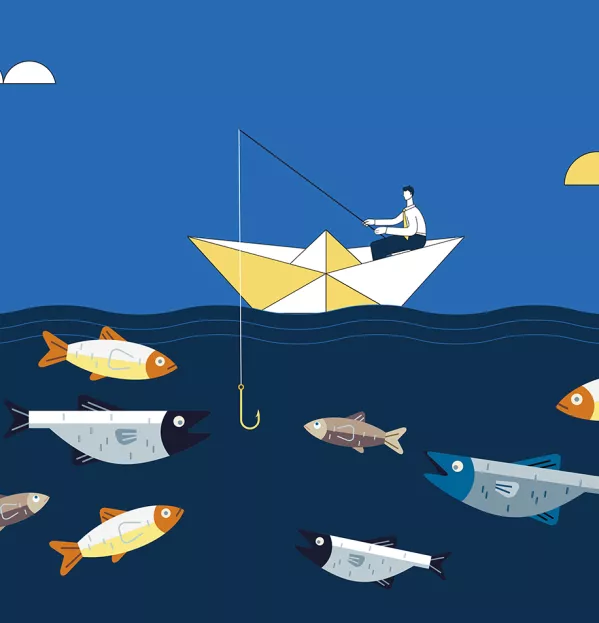- Home
- Teaching & Learning
- General
- Do lesson hooks still have value?
Do lesson hooks still have value?

A
quirky video, a shocking picture, an unusual piece of music: it’s likely that, at one point or another, you’ll have used something similar as a “lesson hook” to engage children in a topic you’re about to teach.
Once a common practice, many educators have shunned hooks in recent years in favour of retrieval practice and other cognitive science-based starter activities.
But are the benefits of hooks still there? Here, two teachers go head to head and share their sides of the argument.
‘A lot of effort for minimal impact’
Lisa Lott is a secondary English teacher in Oldham. She says:
When I first started teaching, I thought of it as a performance and delivered each lesson through a carefully written script. One of the key elements to this script was the lesson hook; the show-stopping extravaganza that would “wow” my class into instant fascination and engagement.
I once dressed up as a museum curator to greet my Year 8 class with “old-looking” items, all linked to Mary Shelley’s Frankenstein, scattered around the classroom. The aim was to coerce them into enthusing about the text. The students - and myself, I must admit - had fun, but the activity didn’t teach them an awful lot, and they probably remembered more about my dressing up than any content.
- Does your teaching need some nonsense?
- Why school CPD isn’t inclusive - and what needs to change
- Is sex education in schools flawed?
Excessive lesson hooks were a lot of effort for minimal impact and, actually, the hook didn’t do much to help with engagement once we got down to the main tricky business of analysing a 19th-century text.
Today my teaching is very different. I still script elements of my lessons where necessary, but I no longer plan standalone outstanding lessons that must engage my class with a profound photograph, some haunting music or a thought-provoking video from the off. And, actually, my teaching is so much better for it.
Images and videos can be useful, and I still use them when relevant, but it’s very rarely at the start of a lesson. Instead, I use entry tasks that encourage students to sit down and immediately and independently recall knowledge from prior lessons.
The growing enthusiasm and desire for students to learn metacognitively means that, for me, retrieval practice is becoming part of my everyday lesson entry planning. I find the routine helps students to self-regulate and the majority of students are happy with the expectation that they begin working and thinking straight away. They like to test themselves and see how much they can remember rather than sitting passively watching a performance.
I still do the voices when I model reading - but that’s just for fun.
‘Learning hooks transform understanding’
Liz Gould is a key stage 3 English and whole-school literacy lead in a London secondary school. She argues:
A growing awareness of cognitive science has prompted many teachers to discard lesson hooks as a way to kickstart learning. I’m not one of these teachers: I believe there is a place in our classrooms for both approaches.
When I teach a new poem, I start with a clip, a painting or an image to introduce students to one of the text’s “big ideas”. For example, I used images of the removal of Edward Colston’s statue to ensure my Year 11 class understood the purpose and meaning of statues before reading Percy Bysshe Shelley’s Ozymandias.
Most students were familiar with the statue and the “hook” functioned as an engaging way to teach them that the ideas associated with statues evolve over time, and the ideas about power and memory presented in Shelley’s poem.
It’s worth pointing out, though, that when planning a hook like this, you would need to take note of the government’s recently released impartiality guidance.
Further up the school, at key stage 5, I often use paintings and video clips as “hooks” to introduce complex ideas related to the genres we study as part of the course. Contrasting Rodolfo Amoedo’s Desdemona (1892) with Pieter Bruegel’s Landscape with the Fall of Icarus (1560) helped students to understand the differences between art centred on the tragic downfall of a protagonist and art that presents life’s true tragedy as the fact that our lives pass unnoticed. Giving students word prompts to contrast these paintings helped them to develop their ideas in a context away from texts laden with unfamiliar vocabulary.
To give another example, I have used clips from crime dramas as a way into exploring representations of guilt, punishment and setting in the crime genre. Often, the ideas generated during these discussions appear later in essays that students write.
Some would say that hooks can lead to misconceptions, but I would argue that this can be avoided through careful activity sequencing and scripting the lesson’s key moments.
For some, lesson hooks are a distraction that obscure learning. However, in my lessons, using them alongside retrieval activities at the start of topics has had transformative effects on students’ understanding of a text’s big ideas, as well as showing them that the ideas that mattered to our best writers and thinkers often endure over centuries.
You need a Tes subscription to read this article
Subscribe now to read this article and get other subscriber-only content:
- Unlimited access to all Tes magazine content
- Exclusive subscriber-only stories
- Award-winning email newsletters
Already a subscriber? Log in
You need a subscription to read this article
Subscribe now to read this article and get other subscriber-only content, including:
- Unlimited access to all Tes magazine content
- Exclusive subscriber-only stories
- Award-winning email newsletters
topics in this article



